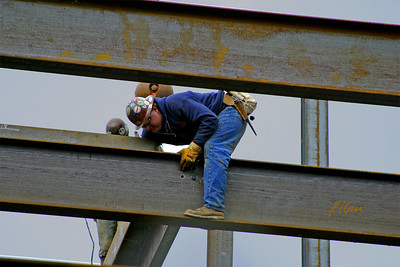I’ve written about Alamance Community College a couple of times. ACC, in Graham, NC, came up with some significant capital improvement plans for its campuses. The campus construction projects were estimated to cost $40M in 2018 and were given the green light. ACC sold bonds to pay for the projects, and then reality struck.
The construction bids all came back high – 15% or more than the bonds (already sold) would cover. ACC asked Alamance County for additional funds to cover the unanticipated additional costs. The county said “No.” ACC asked again and the county agreed to partially fund the campus construction projects if ACC scaled the back. The County’s additional funding came from its capital reserves and from ARPA funds issued in 2021. It also came with strings attached. The additional funds must be used to pay for water, sewer, and Internet connection services for the projects.
Cool.
With the extra money, ACC has been able to fund two campus construction projects and was hoping to fund a third – a public safety training center, initially priced out at $10.5M in 2021. The building is to be constructed on land the college will lease from Martin Marietta. The 50-year lease includes a provision that zeroes out the lease costs for the first three years.
Unfortunately, it’s not 2021 anymore, and now the price of the public safety training center is $22M. That’s the result of inflation, cost increases for construction materials, and labor costs. ACC executives say they will now look for grants and donations to fund the ever-widening gulf between the money they have and the money they need to get their building built.
Steel costs torpedo campus construction projects
ACC is not alone in its crazy cost increase experience. The Associated General Contractors of America estimates that construction project costs for non-residential projects will increase by more than 20% in 2022. The cost of steel has increased by more than 125% this year alone. With steel being the primary structural material for commercial construction, cost increases are likely to savage most campus construction projects, or sink them altogether.
When one is particularly invested in constructing a campus building (for mostly non-academic reasons), cost increases are primary. In Michigan, community college construction projects can receive as much as 50% funding from the State, if the project meets certain criteria. (Academic use is a big one.)
So, when you propose to build a mostly non-academic building, the community will be shouldering the cost for this project. WCC has such a building in the works. The “Advanced Transportation Center” – by WCC’s own admission and by the State’s assessment – has very little to do with advanced transportation. It’s another events building, similar to Morris Lawrence, which someone told me – after $13.5M in rehab work – still leaks. (Congratulations.)
There is perhaps nothing more outright disrespectful to the “rich community” that funds your operation than to saddle it with explosively high building costs for a non-essential campus building that has no hope of attracting additional students when your enrollment is already cratering.
Except maybe to snatch tax dollars away from operations to pay for your crapfest without asking the “rich community” if they approve of that misuse of their funds.
Washtenaw County residents, this is what you get when your elected Trustees bring in carpetbagger executives from other counties to spend your money for you.
Photo Credit: Robert Carr , via Flickr





























